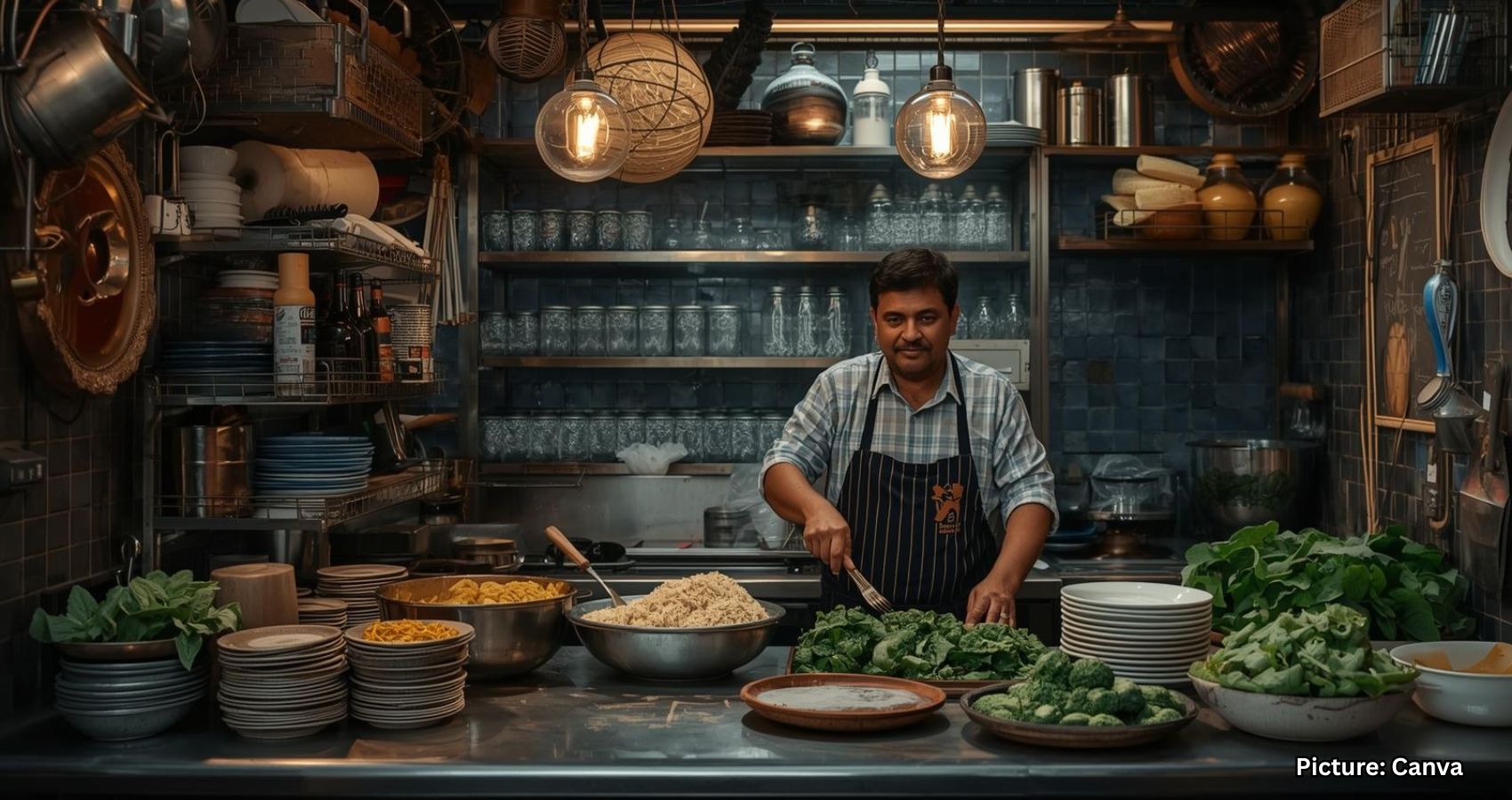Mumbai: A Journey Through Its Kitchens, Streets, and Stories explores the vibrant food culture and rich culinary history of the city through essays, recipes, and striking photography.
At the intersection of city memoir, food culture, recipes, and lyrical photography lies *Mumbai: A Journey Through Its Kitchens, Streets, and Stories*. Published by Sri Bodanapu under the Heirloom Project, this book is set to evoke nostalgia in those who have lived in Mumbai while enchanting those who have yet to experience its vibrant energy.
For anyone who has called Mumbai home, the city is characterized by constant movement and sensory overload. This book distills that energy into a collection of essays and photographs that pulse with the city’s restless rhythm. Food is a central theme, reflecting a metropolis built by immigrants, where long working hours and diverse communities have shaped a unique dining culture. With more than 10,000 restaurants and cafés, as well as countless bhojnalayas and tiffin carriers, Mumbai’s culinary landscape is as rich as its history.
The essays, curated by Rushina Munshaw Ghildiyal, are grouped into sections that cover culinary history, recipes, and personal stories. They flow seamlessly into one another, much like spices stirred into a pot. The section titled “The First Indian City” provides historical context, while “Hands that Feed” offers a personal memoir of cooks, street markets, and dabbawallas. Readers are introduced to the Pathare Prabhu community, who share their unique take on Mutton Gode and sambhar masala, which differs significantly from its southern counterparts.
The book takes readers on a journey through Mumbai’s diverse foodscape. It highlights the chai-nashta rituals that are integral to various communities, the bustling atmosphere of Crawford Market, the wholesale lanes of Dadar, and the fiery offerings found in Bhajji Gali. It also explores the bottled masalas of the East Indians and recipes from Konkani Muslims. The Ramzan feasts at Mohammed Ali Road, nostalgic mawa cakes, delicate macarons, Parsi delicacies, desi Chinese cuisine, and iconic street food all evoke the city’s edible soul.
Each essayist captures Mumbai from a distinct perspective, whether it be through fish markets, community kitchens, eat streets, continental cuisine, nightlife, or the city’s eclectic drinking culture. Mumbai’s origins as seven fishing villages, or Koliwadas, are explored in the essays. Rushina shares her experience of stepping into Worli Koliwada, describing it as a journey back in time. She notes how this area has existed in the heart of Mumbai for over eight centuries, and how the juxtaposition of ancient temples and modern structures reflects the city’s syncretic nature.
As she walks through the narrow lanes, past women selling coconuts, flowers, and fresh fish, she observes Koli men cleaning and repairing fishing nets at the pier. The scene is brought to life with descriptions of fishing boats, adorned with names ranging from Laxmi to Queen Mary, bobbing in the sea, their flags fluttering in the wind.
For this foodie Mumbaikar, reading the essays was a journey full of discoveries. Even familiar places like Worli Fort took on new significance, revealing layers of history and culture that had previously gone unnoticed. Mumbai often forces its residents to navigate their lives according to time and traffic, but this book offers a broader perspective, zooming in on the nuances of everyday life that make the ordinary precious. It teaches where to find the best fish, how to bargain, and the multicultural ways of savoring the same dish.
The recipes featured in the book are deeply intertwined with the people behind them. Before readers meet the ingredients, they are introduced to the history, community, and individuals who contribute to the culinary landscape. Each recipe carries the promise of a culinary adventure, inviting readers to explore the flavors of Mumbai.
The vibrant photography by Bhavya Pansari captures the essence of Mumbai’s dynamic spirit. Her images often feature moving vehicles or hands in action, illustrating the city’s perpetual motion and energy. The design and illustrations reflect Mumbai’s bold shopfronts and billboards, immersing readers in its sights, sounds, and smells. More than just a coffee table book, *Mumbai: A Journey Through Its Kitchens, Streets, and Stories* is a sensory immersion and a celebration of a city that is forever hungry and always feeding.
The book is set to be released on May 20, 2025, and spans 392 pages. It is available in its first edition with an ISBN-13 of 979-8992538397.
Source: Original article

